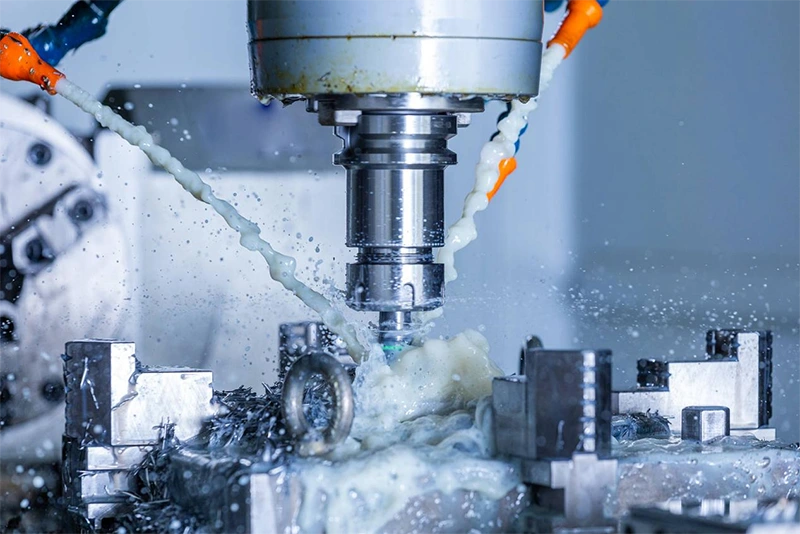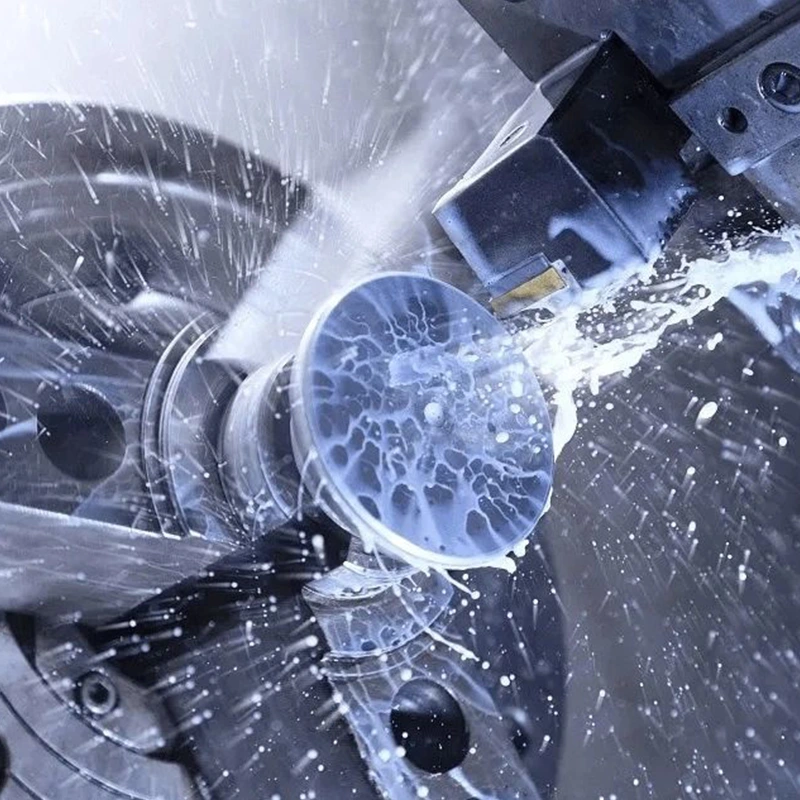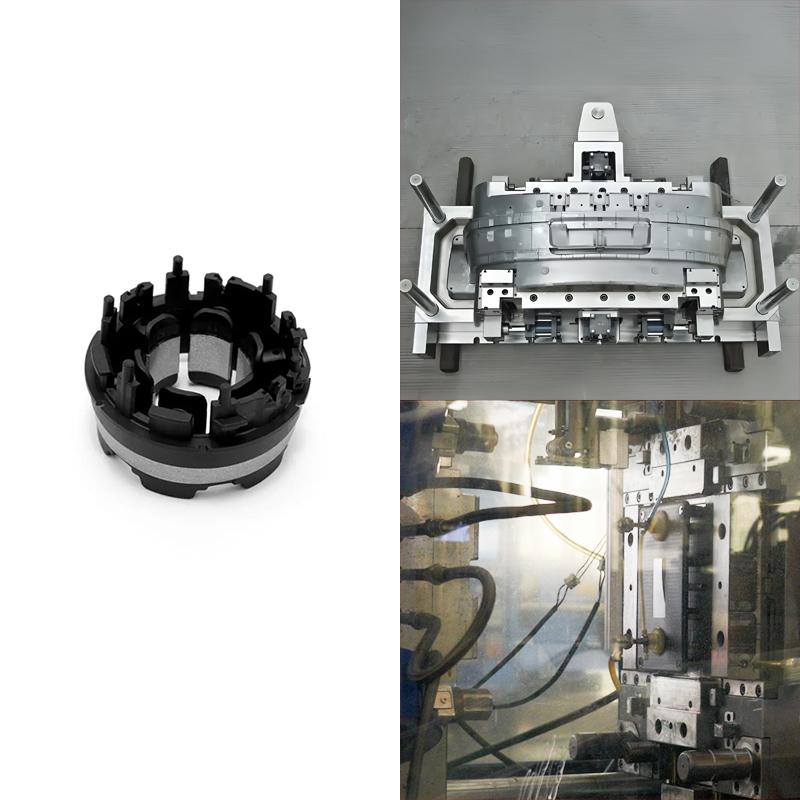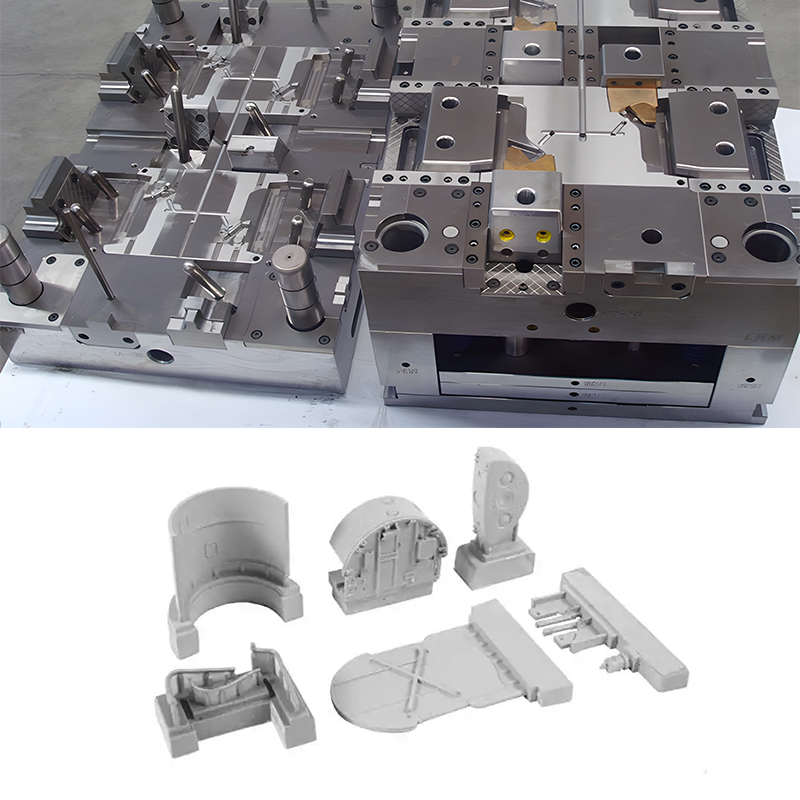In CNC machining, correctly selecting a cutting fluid is crucial for ensuring the efficiency, quality, and safety of machining operations. Cutting fluids, also known as “coolant”, “metalworking fluid”, or “machining fluid”, not only lubricate and cool the cutting area but also help remove chips, preventing overheating and wear of the machinery.
This article will detail the basic classifications and characteristics of coolant, exploring how to choose the most suitable cutting fluid based on different material types and machining operations to optimize machining performance, extend tool life, and reduce machining costs. We hope this will help those passionate about CNC machining.

Basic Classifications of Cutting Fluids
Mainstream cutting fluids mainly include the following types, and it is essential to understand the characteristics of each before application.
(1) Emulsion (water-based cutting fluid)
Composed mainly of water, emulsified oil, and various additives. The advantages of this coolant include low cost and good cooling performance, especially suitable for machining operations requiring substantial heat dissipation. However, it also has disadvantages, such as being prone to bacterial growth and high corrosiveness, necessitating strict control and regular maintenance during use.
(2) Fully Synthetic Fluid
Cutting fluid without petroleum oil base, primarily composed of various chemical additives. Its main advantages include excellent cooling and lubrication performance and resistance to bacterial growth, making it very popular in applications requiring highly clean machining environments. However, fully synthetic fluids are relatively expensive, and some chemical components may be corrosive to the machine.
(3) Semi-Synthetic Fluid
Positioned between emulsion and fully synthetic fluid, containing a certain proportion of petroleum oil base and water. This coolant combines the cooling effect of emulsion and the lubricity of fully synthetic fluid, attempting to balance both advantages. Nonetheless, we must pay attention to its biostability and corrosiveness. This may affect its applicability in certain machining environments.
(4) Straight Cutting Oil (oil-based cutting fluid)
Mainly made from mineral oil or vegetable oil and is completely water-free, thus providing superior lubricity and preventing workpiece rust. This makes it particularly suitable for machining operations requiring high lubrication. However, the heat capacity of straight-cutting oil is relatively low, and its cooling effect is not as good as water-based cutting fluids, which may be a limitation in high-speed or high-temperature machining.
(5) Soluble Oil:
A mixture of oil-based and water-based cutting fluids form an emulsion by adding water. It has good lubricity and cooling performance, suitable for various machining needs. However, the use of soluble oil requires strict control of the dilution ratio and water quality to prevent corrosion and bacterial growth, ensuring the safety and efficiency of the machining process.
After clearly understanding the characteristics of different machining fluids, we can select the appropriate metalworking fluid for different materials and operations to optimize machining performance.
Suitable Cutting Fluids for Different Materials
Choosing the right coolant is crucial for ensuring efficient and high-quality machining, as different materials require different cutting fluids.
(1) Light Metals such as Aluminum
Due to its adhesive and soft characteristics, we recommend using a water-based cutting fluid with high cooling capacity and low viscosity. This machining fluid effectively prevents chip buildup on the tool, reducing friction during machining, preventing overheating, and ensuring a smooth surface finish.
(2) Hard-to-machine materials such as Stainless Steel
Using cutting fluids containing extreme pressure additives is especially important. Stainless steel’s high strength and toughness can cause tool wear. Metalworking fluids with extreme pressure additives can form a protective film on the contact surface between the tool and the workpiece, reducing wear and welding, and improving cutting efficiency.
(3) Copper and Its Alloys
Cutting fluids that prevent surface discoloration and corrosion of the workpiece should be used. Copper is relatively soft and prone to adhesion during machining. Selecting coolants with low or no sulfur content can avoid black spots and other oxidation reactions on the machining surface while maintaining the original color and luster of copper.
(4) Titanium Alloy Materials
Due to titanium alloy’s high strength and low thermal conductivity, it is recommended to use cutting fluids specifically designed for high-temperature alloys, typically containing efficient lubrication and cooling components. Suitable coolants provide good lubrication, reduce frictional heat, and effectively prevent chemical reactions and adhesion, extending tool life.
(5) High-temperature alloys such as Nickel-Based and Cobalt-Based Alloys
These materials generate a lot of heat during cutting due to their heat resistance and high hardness. When machining these materials, it is recommended to use extreme pressure cutting fluids containing chlorides, sulfides, or phosphides, which form a protective film under high temperatures, reducing friction and wear. Additionally, excellent cooling performance is required.
Each material has its unique physical and chemical properties, and selecting the most suitable coolant can enhance machining efficiency and quality while maximizing the lifespan of machines and tools.
Suitable Cutting Fluids for Different Operations
Different types of machining operations also have specific requirements for metalworking fluid selection, involving cooling, lubrication, chip removal, and anti-corrosion aspects.
(1) Turning Operations
Often involves continuous material removal, requiring cutting fluids with good cooling and lubrication performance to protect tools and workpieces. When turning steel or hard alloys, choosing oil-based machining fluids with extreme pressure additives can provide additional lubrication, reducing heat generation and wear. For aluminum or other non-ferrous metals, the emphasis is on the cooling capacity of the cutting fluid to prevent material adhesion to the tool.
(2) Milling Operations
Involves more complex tool paths and multi-point cutting, requiring cutting fluids to provide excellent cooling and chip removal performance. When machining hard-to-machine materials such as stainless steel or high-temperature alloys, high-performance fully synthetic, or semi-synthetic cutting fluids can effectively reduce tool wear and workpiece deformation. They maintain low temperatures in the cutting area, improving machining accuracy.
(3) Drilling Operations
A deep operation requires machining fluids to penetrate the hole bottom to provide lubrication and cooling. Efficient cutting fluids help quickly remove chips, prevent clogging and overheating, and avoid damage to the hole wall and dimensional inaccuracies. For deep hole drilling, using low-viscosity and high-cooling water-based cutting fluids is especially suitable because these fluids can easily penetrate small holes and narrow spaces.
(4) Grinding Operations
Generates significant heat, requiring cutting fluids with excellent cooling performance to prevent workpiece overheating and thermal damage. Water-based cutting fluids are usually preferred because they can quickly absorb and conduct heat, maintaining low temperatures in the grinding area. Additionally, good lubrication is necessary to reduce wheel wear and improve surface finish quality.
In summary, choosing the appropriate coolant not only improves machining efficiency and quality but also extends the lifespan of machines and tools. This ensures operational safety and maximizing economic benefits.
Precautions for Using Cutting Fluids
When selecting cutting fluids, it is necessary to comprehensively consider their performance, safety, and environmental impact to maximize cost-effectiveness.
(1) Environmental Protection
Environmental protection is increasingly emphasized, making environmentally friendly cutting fluids an important topic. Environmentally friendly cutting fluids are mainly made from biodegradable materials, reducing environmental pollution. Additionally, these cutting fluids usually do not contain harmful chemicals, reducing the difficulty and cost of waste fluid treatment. Using environmentally friendly cutting fluids helps companies comply with increasingly stringent environmental regulations and enhances their green brand image.
(2) Safety
Safety is an indispensable factor in the work environment, especially when cutting fluids are involved. Traditional cutting fluids may contain harmful chemicals such as sulfates, chlorine, and heavy metals, which can cause skin irritation, respiratory problems, and more serious health issues. Therefore, choosing low-toxicity or non-toxic cutting fluids is key to protecting operator health, reducing health risks, and providing a safer working environment for operators.
(3) Economy
From an economic perspective, choosing the right cutting fluid is crucial for controlling production costs. Environmentally friendly and high-performance machining fluids may have higher initial purchase costs. But, in the long run, they can save more costs by reducing tool wear, improving machine efficiency, and lowering waste disposal fees. Additionally, using high-quality metalworking fluids can extend equipment life, reduce production interruptions, and further optimize production costs.
Summary
This article comprehensively discusses the types of coolants and their selection criteria for different materials and machining operations. From emulsions to fully synthetic fluids, each cutting fluid has its unique advantages and applicable scenarios, providing optimal cooling, lubrication, and anti-corrosion effects for specific materials and machining needs while also focusing on environmental, safety, and economic considerations.
Through precise selection and application of suitable cutting fluids, manufacturing companies can improve machining efficiency and product quality, ensure a safe operating environment, and optimize production costs, achieving efficient, economical, and sustainable production.




















